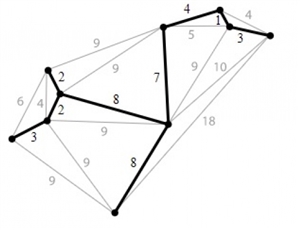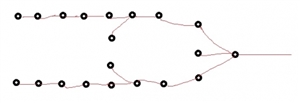As having an array of mains downlighters or spotlights in a ceiling is now fashionable, (rather than a single central luminaire), this begs the question of how to optimally and correctly wire them all up to the light switch.
In the case where one light switch operates multiple lights (as powered by from the domestic lighting circuit), there are several possible ways to wire from the switch to each of the lamps.
[It is taken as obvious that each lamp needs to be wired in parallel, with connections to the mains neutral and the switched-live wires.]
The (twin-and-earth) cable routing from the switch to all the lights and could be one of:
1) Daisy-chain (the cable goes from the switch to one lamp, and then on to the next lamp, until all lamps are connected)
2) Ring (like the daisy-chain wiring, but the final connection then links back to the switch to create a "ring main")
3) Star (separate cables go from the switch to each lamp)
4) Tree (i.e. a balanced spanning-tree, where the cable goes from the switch to two lamps, and each of them connect to two lamps, branching until all lamps are connected)
Each topology has different implications regarding the current distribution, and its associated heating losses in each segment of cable.
For example, a Daisy-chain topology has the highest current loading in the cable segment closest to the switch, but it uses the least cable; whereas the star topology has equal current loading in all its cable segments, but it uses the most cable.
Do the IET regulations recommend a particular wiring topology for particular scenarios, and what does everyone use in practice?
Thank you

